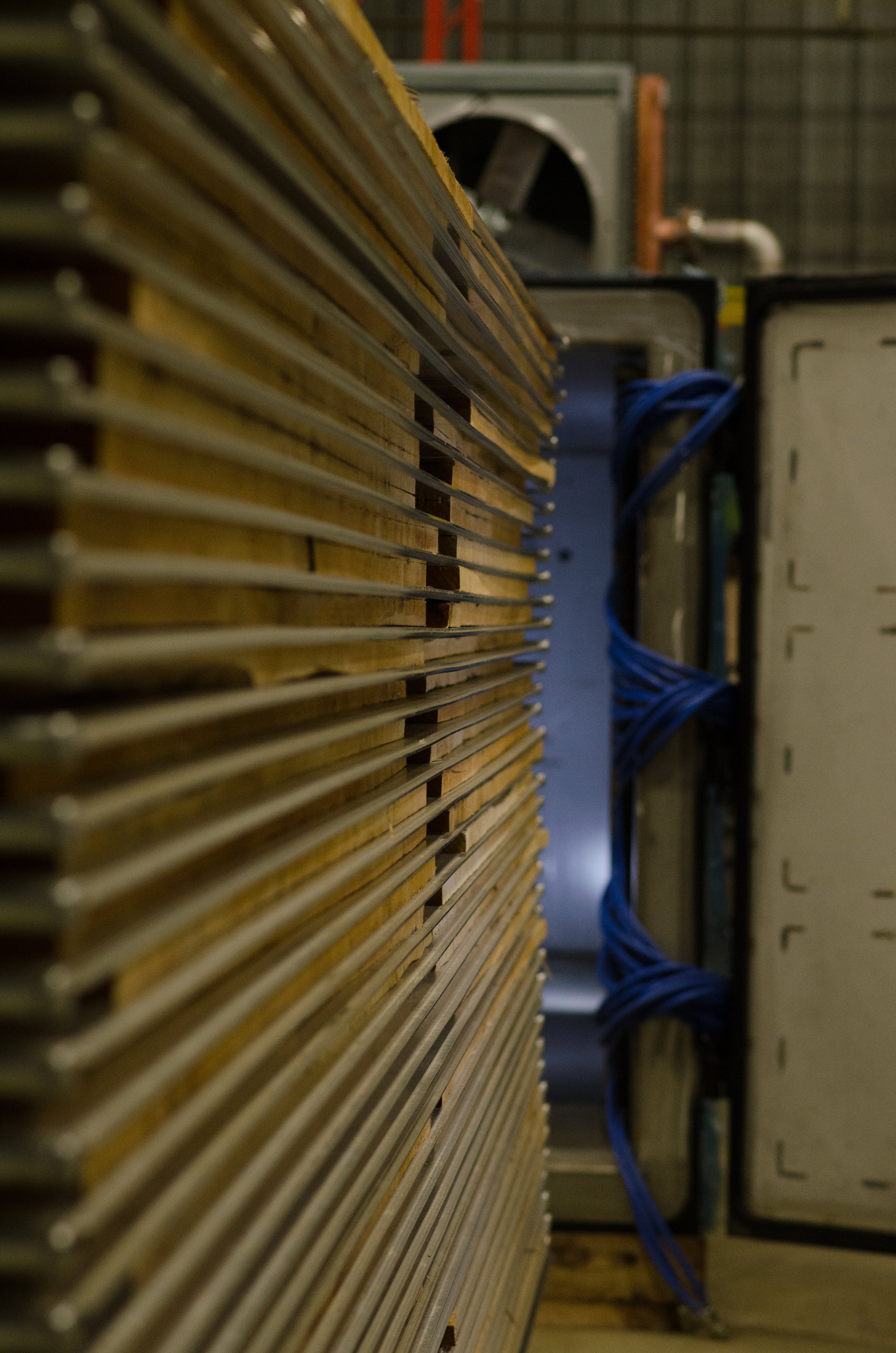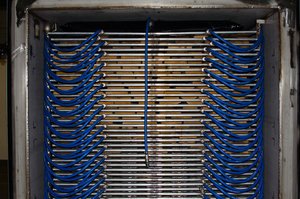iDRY Turbo Interview with President Jim Parker
iDRY Turbo Interview with President Jim Parker
This is a fairly old technology, but it's one that has been majorly simplified in recent years to be more user friendly, requiring less knowledge of wood drying and operating the equipment and so on. So it's a big leap forward. For the plate drying technology, which is what this is, the difference is that we use aluminum hot water heating plates to heat the wood rather than airflow. That makes the machines a little bit more complicated and expensive, but extremely fast and efficient and provides the flattest, highest quality lumber.
That is the kind of category of vacuum dryers or kilns that we're talking about. A heating plate style contact heating kiln, something that we have had a patent on for a long time. For anybody drying wood there are many benefits. But the greatest benefit to this particular drying technology is mostly realized by furniture manufacturers, flooring manufacturers, manufacturers of moldings and millwork for the lumber industry. Although the sawmill gains the benefit of producing really high quality lumber really fast, the people in our industry that gain the greatest benefit from this drying technology are those producing more of a finished product.
The reason for that difference is because the lumber is dried fast in the turbo, but extremely flat as well, and to an extremely high quality. The flatness, in particular, provides them with a piece of wood that they can make their product out of with a much higher yield and throughput. If lumber is very flat, and you're making almost anything out of it, you are not required to clean it, sand it, mold it and work with it to turn it into a flat, perfectly square piece of wood. It's already almost ready to go in its dry rough lumber state.
In other words, you could in many cases, take lumber out of the kiln, put it through a molder, for instance to turn it into molding or flooring or some kind of a dimensional wood product. Whereas if it was coming out of a conventional kiln, it's likely cupped, twisted, bowed, and therefore needs to be ripped, cross cut and planed into a square flat dimension of wood before it can go through that molding process.
Speeding up the Process
Our customers who use this technology have the benefit of being able to skip one, two or three different, very labor intensive and expensive processes in the production and manufacturing of their product. So that's huge. There's a lot of yield improvement there. In other words, if you have 15,000 board feet of wood in this kiln, a much higher percentage of that wood is going to be usable as a finished product. We've heard from customers who have got 30-40% more yield from the same pile of wood because it's coming out so flat and straight. That yield is money. That's 30% less wood that you had to buy and process and pay for, which is a huge return on investment for this technology.
Throughput is the second big benefit for people making In wood products out of the lumber that comes from this kiln. By throughput, we mean the speed and efficiency by which you can put this wood through the downstream manufacturing processes. So molders, planers, rip cutting, and so on. This wood is so much flatter, straighter and more stable that it moves through those types of machinery much faster and more easily. Of course, if you're considering the fact that you may be able to skip some of those manufacturing processes, then the throughput is astronomically improved. The advantage of simply moving past some of the manufacturing process for a typical cabinet maker, flooring manufacturer, molding producer and so on.
Regarding the benefit to the iDRY Turbo, the first thing people see and think of is speed. It is true that the benefits of speed include inventory reduction, carrying cost reduction, and being more agile to the changing market. So instead of holding a million board feet of four quarter red oak number one common hoping that that's what the industry is going to want to continue to get your wood product made into. You can change every day, if you want to. Every other day you could dry what is in demand for your wood products, different species, etc. That agility is really important, the ability to hold less inventory, because we are removing much of the drying as a bottleneck and manufacturing is a big benefit.
Combining Speed with Quality
The speed is really secondary to the quality in this case. Being able to dry fast is impressive, but it's meaningless without quality, and the return on investment for this technology really lies in the quality. There's some other benefits to this type of technology as well. For the volume of lumber that they produce, they take up a very small footprint, they require significantly less energy. For instance, even our biggest turbo line or product is the iDRY Turbo Pro which dries up to 15,000 board feet at a time.
If you're turning that kiln one or two times a week, you’re putting out an enormous amount of truckloads of wood per week. But it only has one small gas boiler as a heat source. There's no requirement for a great big steam boiler. So one of the major benefits to a lot of the bigger companies out there with conventional drying is if their boiler is obsolete or requires a lot of maintenance, or a lot of energy. In a lot of cases, they're trying to expand their drying capacity at that site but if their boiler is tapped out it has no more capacity to add kilns.
In the case of our products, it doesn't matter because we're going to drop this machine on the ground, usually in a building, and then plug it in and load it with wood. It's really simple with a fast installation relative to a conventional kiln, having the same capacity or throughput and there's no major boiler required. It's a small, really small gas boiler and one electrical connection.
That’s another big benefit of buying a drying machine versus building a drying building like a conventional kiln process. It's very easy to use, most of our customers have never dried wood before and don't have a trained kiln operator on site, which is also becoming a major problem for the larger segment of the industry. There's a huge shortage of educated conventional kiln operators out there and if anybody has operated or been around a conventional drying operation, they know it takes a huge amount of responsibility, training and attention.
Without a person with that experience, you can ruin millions of dollars worth of wood really fast because you have 100,000 to a million board feet of wood drying all at the same time. So there's a lot at stake there and it creates a lot of pressure for the company to find a person to operate the conventional kilns and for the operator to not screw up, whereas the iDRY Turbos are fully automated. You load it, close the door and press start. The drying process is automated and very safe for the wood, it requires very little attention during the process, you can see what's going on with the drying and when it's done, it's done. You press stop and pull it out, take a few kiln samples, making sure that your wood is dried to the moisture content you were looking for, and then simply unload it.
Ease of Use
So that's another huge benefit, the loading and unloading of the dry turbo line is different from our other vacuum kilns. Instead of putting stickers in every foot or two feet to create spacing between each layer of wood for airflow like in a conventional process. The turbo line of kilns uses these aluminum plates placed between each layer of wood. Those plates are heavy, and can be awkward to handle, so we have material handling solutions for that. But it's different from the conventional process.
So if a company is already set up to sticker lumber and they're moving to this particular technology versus our other vacuum dryers that used stickers, then they're faced with adding our stacking system. Which is as simple as a small gantry crane that's very basic, affordable and easy to use.
For the iDRY Turbo Pro, which has very large heating plates, 27 feet by eight feet, that you're looking at a fully automated vacuum stacking system, which can be run by one operator and is really kind of remarkable. It loads the plates onto a layer of wood and the full layer of wood can come from several piles of wood all at once onto the plate and builds up this sandwich of heating plates and wood automatically. Then we have a trolley system. It's a remote control system to pull that pile of wood out from under the stacker, roll it down to the kiln that you're loading, and then put it in the kiln.
A building full of say 8-10 iDRY Turbo Pros, which would be drying 10 million plus board feet per year could be operated by one or two people. So it's not very labor intensive. It just requires a stacker just as if a comparable conventional kiln operation was being installed, they would need a stacker to put in stickers. Those are some of the considerations. It's the most advanced, most sophisticated, simplest to use drying process out there, and we've been doing it for 30 to 40 years in one form or fashion. But in the last five years, we've really simplified it with the iDRY Turbo brand and made it accessible and really brought the cost of the equipment down as well. So it's a really good time to get into this type of technology.



